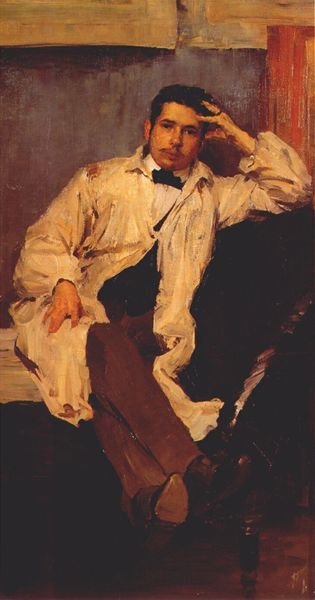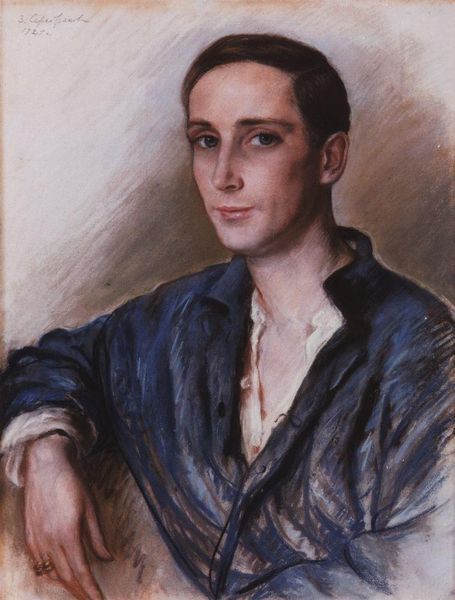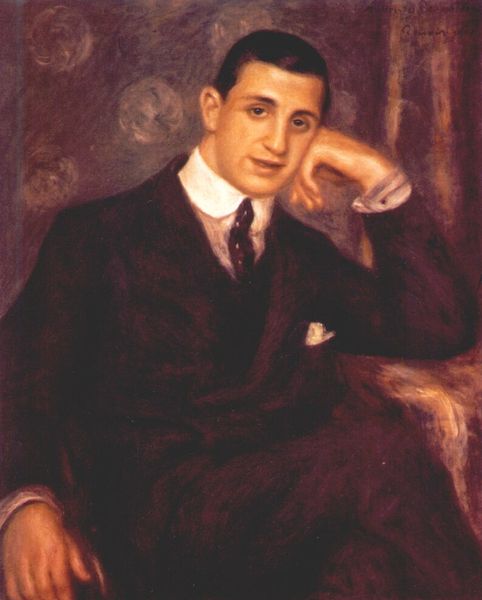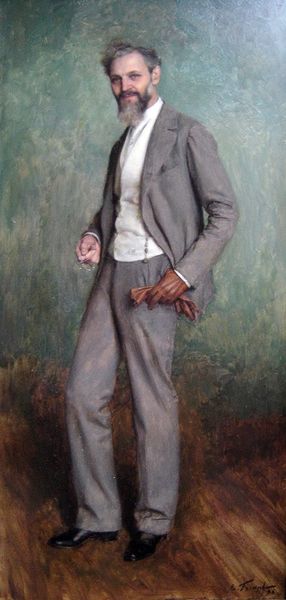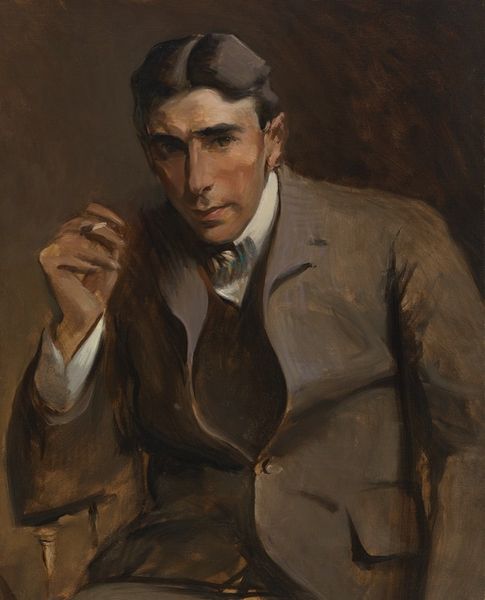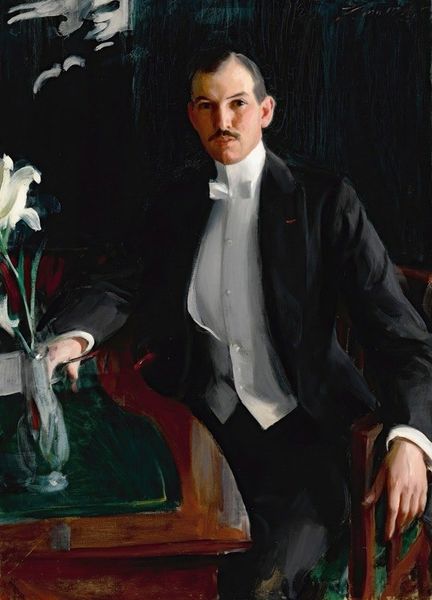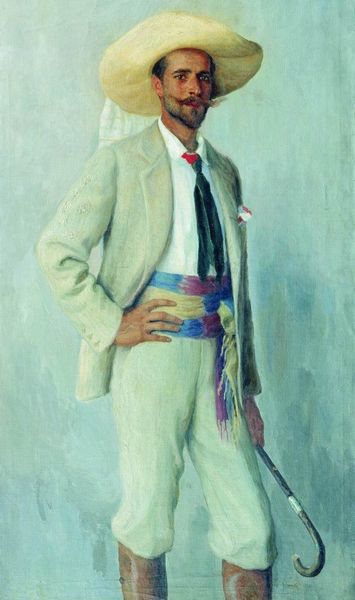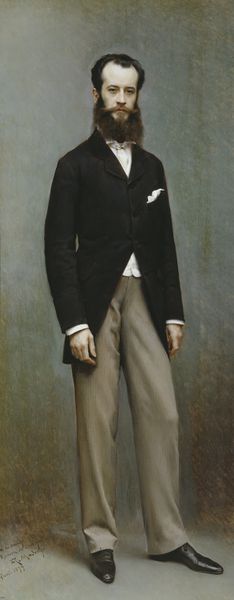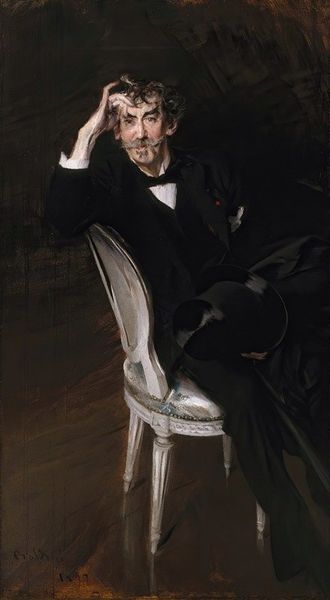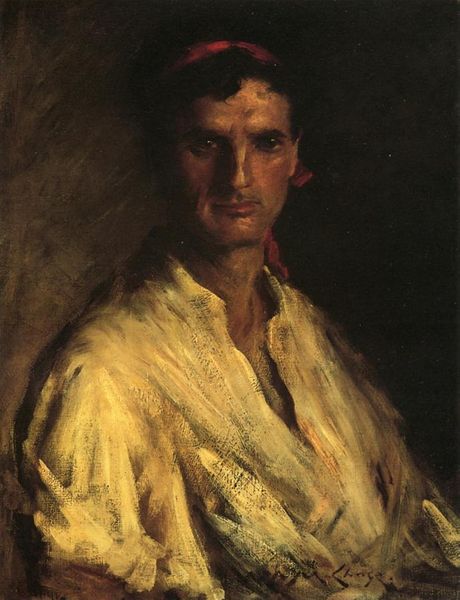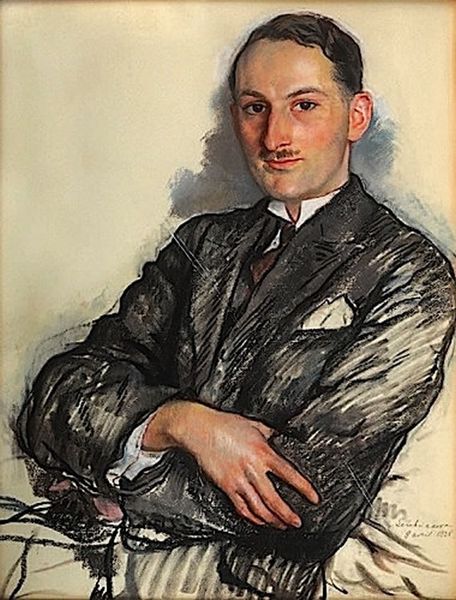
Copyright: Public domain
Editor: This is a painting titled "Harry Melvill" by Jacques-Émile Blanche, from 1904. It's oil paint on canvas. I’m immediately struck by the subject’s pose, very deliberate, almost theatrical. What are your initial thoughts on the work? Curator: Indeed. Let us consider first the compositional structure. The pyramidal form, anchored by the subject's clasped hands and rising to his face, provides a classical stability. Note the interplay of light and shadow—how Blanche utilizes it to sculpt the figure and create a sense of depth. Do you perceive any tension in the brushstrokes themselves? Editor: I do. Especially in the face and clothing – quick, almost impressionistic strokes, yet retaining a firm sense of form. Does the artist’s brushstroke choice impact the overall mood of the work? Curator: Assuredly. The vivacity of the brushstrokes suggests an immediacy, capturing not merely a likeness, but also a sense of the subject's vitality. Consider, too, the restrained palette. The predominantly warm tones create an intimate, perhaps even a nostalgic, atmosphere. How does that impact your understanding of the piece? Editor: It adds to the overall impression of controlled energy and confidence, avoiding ostentation while capturing a unique personal style. I never thought about the lack of bold colour lending a quiet confidence to the subject. Curator: Precisely. And consider how that restrained use of colour serves to focus the viewer’s eye on the psychological space within the portrait itself, offering the suggestion of inward reflection or perhaps a subtle anticipation. Editor: I've learned that careful composition and even subtle palettes can greatly contribute to understanding portraiture. Thanks for walking me through this! Curator: My pleasure. A painting such as this reminds us that artistic analysis may require looking beyond mere representation to discern the delicate visual cues.
Comments
No comments
Be the first to comment and join the conversation on the ultimate creative platform.

